As one of the leading manufacturers for custom molded projects, AIM is a great resource for design assistance with thermoplastic injection molded enclosures. Thermoplastic injection molding is particularly useful for projects which require exceptional durability as well as cost-efficiency and light-weight attributes.
Once thermoplastic injection molding has been selected as the manufacturing method of choice, there are a number of additional considerations to take into account to achieve optimal performance. Explore some of the options to consider when designing a thermoplastic electronic enclosure:
Internal Features
While external features are important to consider, especially as these features will be most visible during end-use, it is equally important to consider the internal features of an injection molded thermoplastic enclosure. Notably, during the design stage, internal features, such as ribs and bosses, should follow thickness rules of thumb to avoid external cosmetic problems such as sink. By ensuring that all internal features are designed using optimal wall thicknesses, the flow of molten thermoplastic will be unhindered and create high quality end results.
Accommodate Variability
More than many other application types, electronic enclosures must account for a large amount of variability in final assembly. Because electronic enclosures often involve features such as displays or printed circuit boards, more flexible designs are required for the thermoplastic injection molding process. By tolerancing each part to accommodate variability of other components, customers can avoid waste and problems that halt the assembly cell.
Water Proofing
Moisture damage can be detrimental to certain electronic components. As a result, sometimes it is critical to invest in reliably waterproofed electronic enclosures.
If waterproofing or water resistance are part of your requirements, it is important to incorporate the proper methods during the design stage, as it is very difficult to adapt thermoplastic injection molds to the requirement after production has started. With a customized approach to molding, AIM is able to meet stringent standards for waterproofing electronic enclosures.
Meet Flammability Requirements
Lastly, it is useful to consider flammability requirements when designing a thermoplastic injection molded electronic enclosure. Some certifying agencies require a level of flame resistance depending on the power of the device. This will guide to certain plastic resin selections. These resin options may differ in shrink rates, which will affect the final dimensions. This is important to consider if the product has mating components.
AIM is Available for All Thermoplastic Molding Needs
The aforementioned considerations are just a few of the factors that are involved in the thermoplastic injection molding process. If you are developing a custom molded electronic enclosure, we encourage you to get in touch with our team of experts and learn more about how to receive the best possible end results!

 SINCE 1993 MADE IN USA
SINCE 1993 MADE IN USA 

